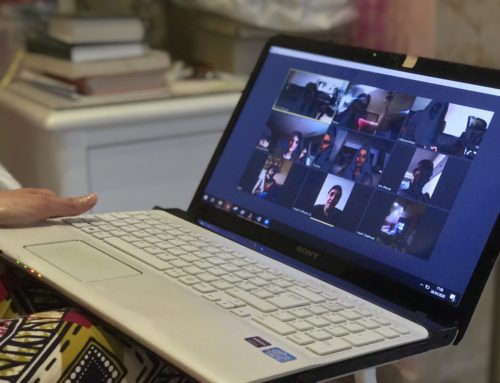Have you ever noticed that some nonprofit leaders seem to be everywhere in the media?
They are featured in magazine profiles. They show up on TV. They get quoted regularly when reporters are looking for experts.
The cynical among us might dismiss their media success, saying that they get attention because they are good looking. Or because they work at huge organizations. Or because they have a famous name.
Or because they just got lucky.
There is some truth behind this cynicism. When the media comes calling, they often are drawn to pretty faces, famous names, and big brands.
But, as hard as it might be to believe, their success isn’t an accident.
After all, there are more than a few good-looking people who lead nonprofit organizations who don’t get a lot of media attention.
And there are a lot of big organizations that have a low media profile — even as leaders of smaller, local organizations are able to establish a significant media presence.
Are all of these groups just unlucky?
My experience says no.
As a former journalist who spent more than 20 years on the beat — including a long stint covering nonprofits for The Chronicle of Philanthropy — I discovered that some nonprofits do a great job of positioning their leaders in the media. And quite a few others don’t.
Now that I work to help nonprofits and foundations build their media presence, I’ve studied some of the most successful organizations and found that there are some common traits among many of the nonprofit leaders who have become our field’s version of media rock stars.
So what sets the rock stars apart from the rest of us?
From what I’ve observed, there are at least three key ingredients.
Ingredient 1: An Origin Story
Journalists are storytellers — and they are drawn to compelling narratives.
If you have a leader in your organization who really knows her stuff but doesn’t seem to connect well with reporters, it helps to try to humanize her — to provide a window into why she has chosen to lead your nonprofit or tackle a difficult mission.
One tactic that works well is to capture your leader’s origin story — the story behind why he or she is passionate about your cause.
A number of prominent nonprofit leaders use their origin stories as a key piece of their official bio, as a hook for media pitches, and in their speeches. Those who do it well are more likely to capture the imagination of reporters who are looking for interesting profile stories or for anecdotes for news pieces.
That has been the case for Scott Harrison, the founder and chief executive of the nonprofit charity: water, who has used the story of why he left his previous life as a concert promoter to begin his quest to bring clean drinking water to people in developing nations.
This backstory has become a central part of charity: water’s story, speeches, interviews, and a book — and has been a focus of news stories and features about the organization for the past 15 years.
While not every origin story is as dramatic as Harrison’s, it can still be incredibly value to capture and share your leader’s origin story.
To capture that story, it helps to ask one or more of the following questions:
- Why did you get involved with this work?
- How did you decide to work at our organization (or for founders, create the organization)?
- Was there a defining moment or experience that speaks to why you do this work?
Ingredient 2: A Succinct Vision
While many nonprofit media rockstars have a strong and compelling backstory, they are also able to connect that backstory with an equally strong and compelling vision for what they want to achieve.
Organizations such as Share Our Strength, which has a concise and clear vision — to end childhood hunger — are able to quickly convey their objectives and capture the attention of reporters and other journalists who are looking for sources.
If you can find opportunities to distill your leader’s or organization’s vision into an easy-to-grasp vision, you have a strong chance of branding your leader as a capable and strong spokesperson.
Ingredient 3: Smart, Focused Media-Relations Support
While a compelling backstory and vision can help capture the attention of reporters (and their readers and viewers), the most important ingredient is sustained media relations support.
Branding your leader as a viable source in the media requires skill — and a true willingness to invest time and resources to support your leader and build connections with the media.
If you truly want to establish your executive director or expert as a thought leader, you’ll need to think about developing a thought leadership strategy that includes:
- Creating original content by your thought leader. This can include research papers, speeches, blog posts, or even social media musings. The important thing is to make sure you can provide source material that shows your expert knows their stuff.
- Coaching your expert. Not everyone is a natural in front of a microphone or camera. And even the most polished speakers often need help honing their messages and talking points. It’s important to work regularly with your thought leaders to help them put their best feet forward.
- Building relationships. Your thought leaders typically don’t have time to cultivate relationships with reporters. That’s why they have you. The most effective media rockstars have a strong promoter working the phones and helping establish the connections that will yield feature stories and interviews.
By taking these steps, you’re not guaranteed to have your executive director i profiled on 60 Minutes or quoted on the front page of the Wall Street Journal.
But if you take some of these steps, you’ll have a much greater chance at getting your leaders to appear more regularly in the outlets you care most about.






